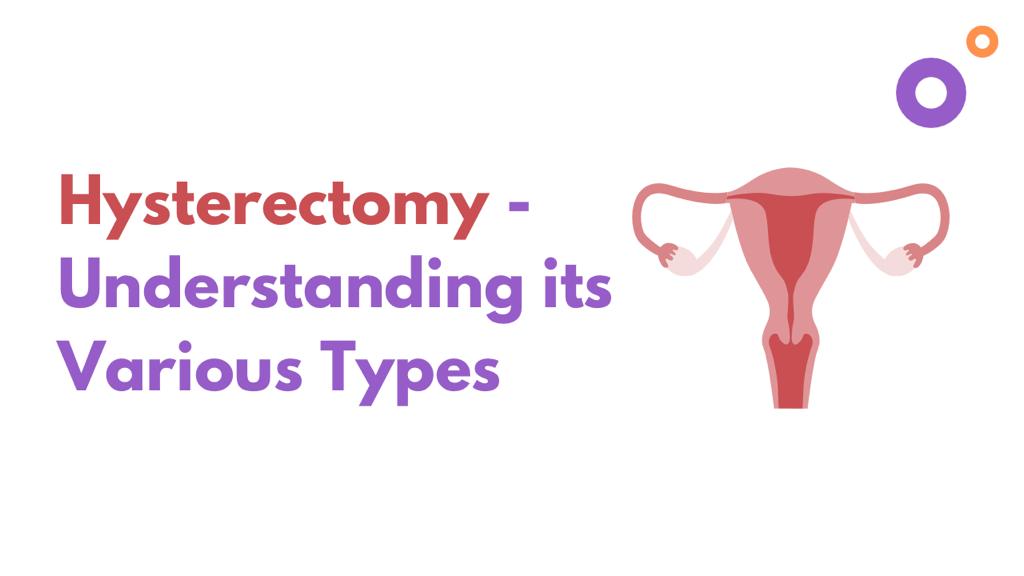
Hysterectomy - Understanding its Various Types
To better prepare for hysterectomy surgery, it’s important to know its different types. Read to know the different options available for the procedure.
Next to caesarean births, hysterectomy is the most common surgery among women to treat many conditions such as pelvic pain, uterine fibroids, uterine prolapse, endometriosis, uncontrolled bleeding and cancer. Sometimes, a hysterectomy is recommended in women with a higher risk of developing uterine cancer.
Different types of hysterectomy surgeries are performed depending on the patient’s health condition and prognosis. Usually, a hysterectomy involves removing the uterus completely. In some cases, the entire cervix or a part of it is also removed. Depending on the patient’s circumstances, the doctor may also remove surrounding tissues and organs.
Various Types of Hysterectomies
The doctor is the best person to recommend the type of hysterectomy suitable for a patient. Understanding the types and procedures will help the patient prepare for the surgery.
● Total Hysterectomy
Total hysterectomy means the removal of the uterus and cervix altogether. The ovaries and fallopian tubes will remain intact. This is the most common type recommended for women suffering from uncontrolled and painful bleeding. It is also commonly recommended for uterine and cervical cancer.
● Supracervical Hysterectomy
In a Supracervical Hysterectomy, the surgeon will remove only the upper portion of the uterus, leaving the cervix intact. Some women may want to keep their cervix and if the health condition permits, it can be done. In some women, the removal of the cervix complicates the surgery and the doctor may choose to leave it intact. At times, doctors don’t recommend leaving out the cervix during surgery, especially when the patient has abnormal pap smears or has an increased risk for cancer.
● Total Hysterectomy with Bilateral Salpingectomy and Oophorectomy
Your doctor may suggest completely removing the female reproductive system to reduce health risks. The uterus, cervix, ovary (Oophorectomy) and fallopian tube (Salpingectomy) are also removed. Depending on the condition, both fallopian tubes (Bilateral Salpingectomy) and ovaries (Bilateral Oophorectomy) are removed. When ovaries are removed, it will trigger menopause symptoms.
● Radical Hysterectomy.
Radical hysterectomy involves the removal of the uterus and surrounding tissues called Parametrium. When a hysterectomy is recommended for cancer, Radical Hysterectomy is the most ideal option. Lymph nodes are also removed along with the cervix, uterus and surrounding tissues. When the patient has advanced cancer, a radical hysterectomy is highly recommended. Healthcare practitioners recommend this surgery when the patient has a very high cancer risk.
Understanding Hysterectomy Surgery
Once the type of hysterectomy is decided, the surgeon will go on to explain how the surgery is performed. Depending on what organs must be removed, the surgeon can make multiple small incisions in the lower abdomen to take out the organs. Removing organs through the vagina is also possible. The laparoscopic technique involves tiny incisions to remove uterine organs. While understanding the procedure is necessary, the surgeon is the best person to choose the procedure that provides better recovery with reduced risks.
● Abdominal Hysterectomy
A traditional abdominal hysterectomy involves making incisions in the abdomen. The incisions are also made vertically if necessary. Surgeons prefer open surgery under certain conditions to have a clear view of the uterine area or when the fibroids are large. This procedure will result in visible scars. Some complications include bleeding, blood clots, infection, and urinary retention. It has a more extended recovery period.
● Vaginal Hysterectomy
In a Vaginal Hysterectomy, no incisions are made on the abdomen. The surgeon will remove the uterus in parts through the vagina. The surgeon will first detach the uterus from the fallopian tubes, ovaries and upper vagina. Surrounding connective tissues and blood vessels are also cut and sealed. The uterus may be cut into smaller pieces for easy removal through the vagina. However, this may not be possible if there is cancer involved. The recovery period is much better than abdominal surgery, but not many women will have this option.
● Laparoscopic Hysterectomy
A few half-inch incisions are made in the abdomen and a laparoscope is inserted through the opening. The surgeon will then have a full view of all the organs in the pelvic region. The uterus is cut into smaller pieces to remove through the small opening. The uterus can be removed through the vagina as well. Robotic-assisted laparoscopic hysterectomy is also becoming common where the surgeon operates robotic arms to perform the surgery. Robot-assisted surgeries take longer but their recovery period is shorter. The recovery period for laparoscopic hysterectomy is much less than for open surgery.
Hysterectomy side-effects depend on the pelvic organs removed during the surgery. Losing interest in intercourse is expected immediately after the surgery. There is a higher risk for Osteoporosis as well. Women go through both physical and emotional side effects because they can’t get pregnant after a hysterectomy. Removal of ovaries can trigger menopausal symptoms, further increasing emotional turmoil. Discussing the options with the healthcare provider and engaging the partner while making the decision can significantly help women to go through the procedure and recover in a supported environment.